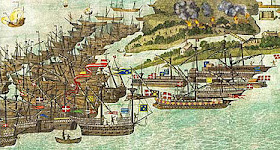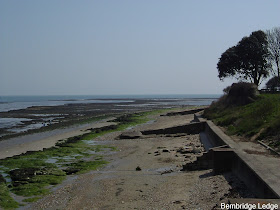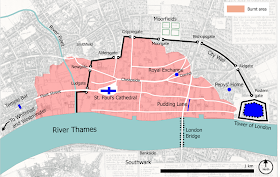 |
| Click to find the other blogs taking part. |
My post is about Carisbrooke Castle on the Isle of Wight.
One famous inhabitant was Charles I, imprisoned at Carisbrooke during the
English Civil War – but can you name another four famous occupants?
If not, read on…(in fact, even if you can –read
on!)
PS GIVEWAY DETAILS AT THE END OF THIS POST!
PS GIVEWAY DETAILS AT THE END OF THIS POST!
Isabella
de Fortibus
In the 1260’s
Isabella was one of the greatest landowners in England and that she was a woman made this all the
more unusual. She came to her wealth through marriage and inheritance. The
first by the death of her husband, William de Fortibus, when she was just 23.
The second the murder of her brother, Baldwin de Redvers, who was possibly poisoned.
When in 1262 she inherited his lands in the Devon, Hampshire and the Isle of
Wight, Isabella became extraordinarily wealthy and powerful.  |
| Isabella's window in the present day (Author's own photo) |
Sir
George Carey
Sir George
Carey was the grandson of Mary Boleyn, (Anne Boleyn’s sister) , and therefore a
cousin of Queen Elizabeth I. in 1583 he was appointed captain of the Isle of
Wight –overseeing maritime law, controlling shipping around the island, and fighting piracy. Part of his work was to protect the island from invasion (see also: Invading the Isle ofWight). To do this he trained militia, fortified defences and refurbished the chain of beacons that would be lit as a warning should the Spanish invade.
 |
| View from the ramparts of the ruin of Sir George Carey's house. (Author's own photo) |
Charles I
From 22
November 1647 to 6 September 1648, Charles I was a prisoner at Carisbrooke
Castle. During this time, the aim was for him to negotiate with Parliament and
the Scots to find a settlement that would return some power to him. At first he
was held as a guest, with considerable freedom and many luxuries – such as the
bowling green created for on the eastern outwork (previous a drilling ground
for militia). However, when no progress was made, his attendants were removed
and he was imprisoned more strictly.
 |
| View from the ramparts of Charles I's bowling green (with the white marquee on it) (Author's own photo) |
He continued
to plot via secret messages carried by servants and on the night of 20 March
1648, Charles tried to escape. He climbed out of his bedchamber window but
became stuck in the bars! After this he was removed to more secure quarters but
even so, he plotted another escape but was thwarted when someone betrayed him
and extra sentries were posted beneath his window.
 |
| The window through which Charles I tried to escape (Author's own photo) |
Princess
Beatrice
Queen
Victoria’s loved the Isle of Wight and bought Osborne House as a private family
retreat.  |
| Princess Beatrice with her mother, Queen Victoria. |
Her youngest
daughter, Princess Beatrice seems to have inherited this love and spent the
early part of her married life to Prince Henry of Battenburg, living at
Osborne. Queen Victoria appointed Prince Henry as governor of the Isle of
Wight, and when Henry died, Beatrice inherited this role.
 |
| The garden created by Princess Beatrice, within the grounds of Carisbrooke Castle. (Author's own photo.) |
Some while
later, in 1913, Princes Beatrice revived the lapsed custom that governors of
the Isle of Wight resided in Carisbrooke Castle. She made some alterations, to
bring it up to date, and spent many of her summer at Carisbrooke until her
death in 1944.
And
finally…the donkeys!
For any castle,
in order to withstand a siege, a reliable source of water is essential. To this
end a decent well is essential. Carisbrooke Castle has a courtyard well that is
49 meters deep, the lower part cut through chalk and the upper lined with masonry.
In Isabella’s time a house was built over the well with a tread wheel to raise
buckets of water. The current well-house was erected by Sir George Carey in
1587.  |
| Postcard of the donkey working the treadmill at Carisbrooke Castle |
It seems
likely the treadmill was originally powered by prisoners, but in 1696 a visitor
recorded:
“Water was drawn by a horse or ass.”
From then on specially trained donkeys were kept at the castle, to walk inside
the wheel and winch up buckets of water. To this day, tourists can visit the
well house and watch the donkeys at work (although, in case you were wondering,
the castle is now connected to the mains.)  |
| Click for link |






























